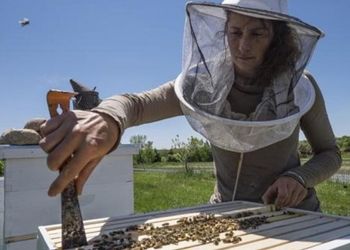Expanding Access for Chronic Disease Management

Expanding Access for Chronic Disease Management
Mia Jang is using her dual expertise in nutrition and technology to reshape health care access.
May 30, 2022As a graduate student at MSU in the 1990s, Mia Jang threw herself into research around obesity. Growing up in South Korea, her mother was obese, and so were other family members. She had studied food science and human nutrition at Seoul National University, but now at MSU, she found herself eager to develop a medicine that could cure obesity in humans.
She studied Leptin, a protein that was lacking in a genetically obese mouse model, combing through research to see its effects on neurotransmitters—these mechanisms might, Jang hoped, be key to a potential cure. Jang planned to continue this research once she earned her Ph.D.
Then, in 1999, her nephew in South Korea died in an accident. With her family across the globe and feeling helpless, Jang wanted to do something. So, she went online. Jang learned HTML and created a website where her family and friends could express their grief. Pre-social media, Jang was excited to find a way to connect people across the world.
Around the same time, she had a realization about her research. “With human obesity,” Jang said, “changing people’s behavior is more important than developing medications.”
She didn’t know it at the time, but the seed had been planted for Health & Wellness Innovations, the company she would create that today is a digital health solution provider helping organizations improve the health and wellness of their populations.
Back in 1999, Jang was already an expert in nutrition, but had also honed her technology skills in creating the grief support website. With no plans of becoming an entrepreneur when she came to MSU, Jang decided to take a leap and create a site that could open access to important nutrition and health information.
In 2001, she launched Nutriinfo.com, which offered a structured online weight and health management program to Korean consumers.
Unfortunately, it never took off. She returned to MSU in a research capacity in 2004, but remained interested in the idea of providing health care access online. In 2007, Jang recreated Nutriinfo in the U.S. This time, the site was geared toward dietitians, allowing them to automate their work by collecting data from patients to make coaching easier.
The site had legs. By 2014, digital health technology was gaining traction. Jang rebranded as Health & Wellness Innovations and changed the focus from dietitians to public health educators for accessible care.
“My goal,” Jang said, “is to empower health professionals so they can deliver personalized health care to their own populations.”
Health & Wellness Innovations created the platform WATT (Wellness Anytime Through Technology) that is used by both patients seeking guidance, and the health providers available to them. The pandemic proved the value of technological advances in health care knowledge. “People realized our technology was essential for managing chronic diseases such as obesity and diabetes,” Jang said.
She hopes her platform will continue to grow and reach wider and wider populations. It’s not the world of medicine she expected to find herself in back in the ’90s, but it’s where she feels at home today.
“I didn’t know anything about business when I started mine,” Jang said. “Usually, our competitors raise large sums of money, but we did not have that. But my expertise in the field and the technology is what will hopefully set us apart.”
So far, Jang is on course.
Author: Liam Boylan-Pett



